Upper Body Pulling Exercises: Everything Rows and How To Progress Them
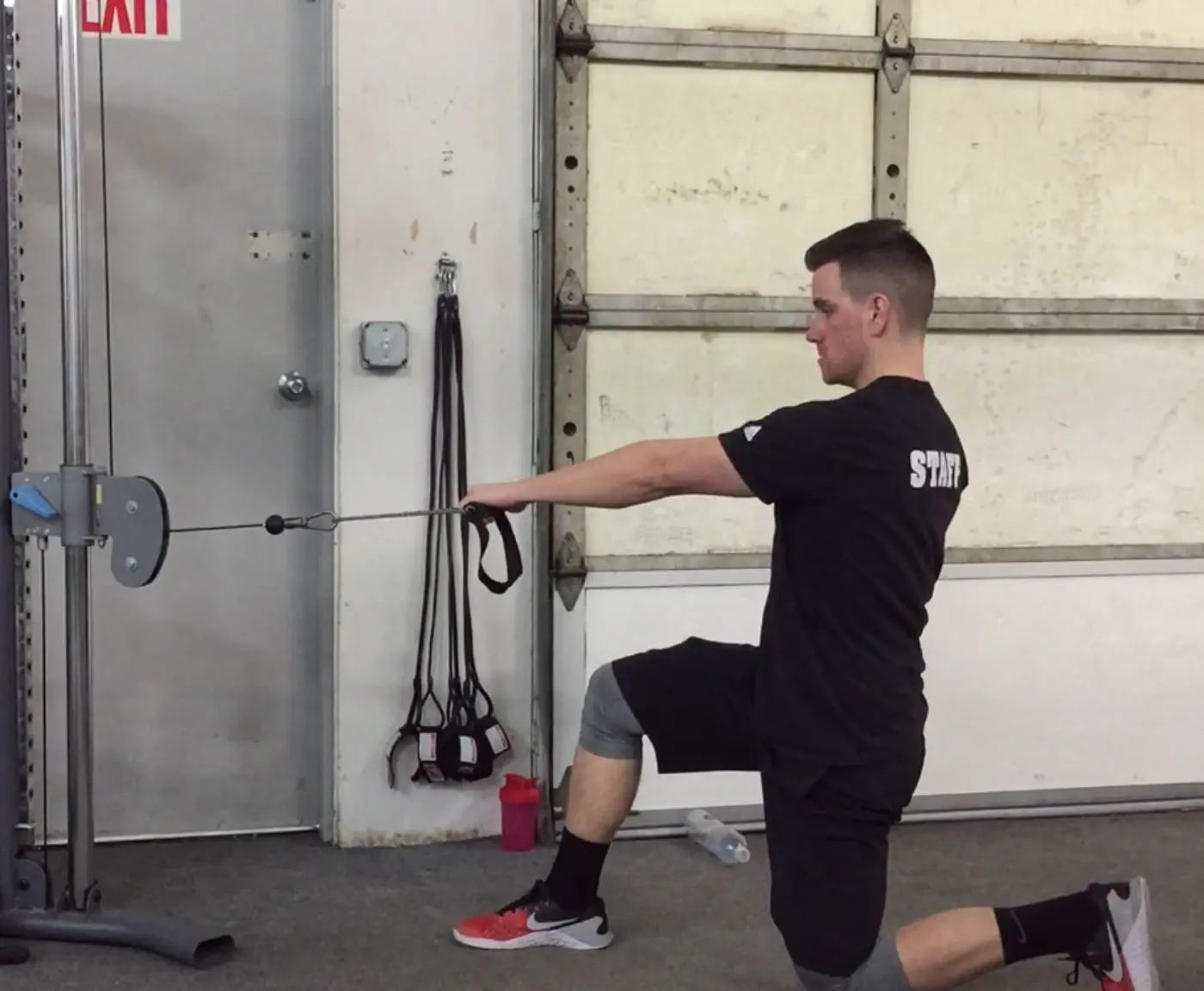
We have all heard the saying “you have to row to grow.” While this statement holds truth, rowing exercises play a pivotal role in performance, injury prevention, and movement quality. Rowing variations are also one of the most commonly butchered exercises, and without proper technique, the carryover of benefits will be minimal at best.
The main muscles targeted in rowing variations are the latissimus dorsi (lats), rhomboids, and trapezius (traps). While building these muscles will increase overall performance, their main throwing functions are to assist in scapular upward rotation and decelerating the arm. While scapular movement is a topic for another post, heavy rows allow overhead athletes to load the scapula directly without compromising the glenohumeral joint—and that is worth mentioning.
In addition to increasing strength and hypertrophy in the lats, rhomboids, and mid traps, heavy rows also increase the strength of stabilizing muscles around the shoulder joint and help keep the humeral head centered within the glenoid fossa. This will help keep range of motion sufficient in both internal and external rotation, which is sometimes lost and/or gained due to repetitive throwing.
The Exercises and Progressions
The first rowing variation we will discuss is the inverted row. Just as the push up is a great upper-body pushing exercise for determining relative strength, the inverted row shows one’s ability to pull his own body weight. The inverted row is great for both beginners who might not have the ability to pull a heavy-external load and for advanced lifters who want to improve relative strength and core stability. Because the inverted row requires maintaining a strong base and neutral spine, core stability is a huge component to performing the exercise.
Set up a barbell inside a rack at about hip height. Lay down and grab the bar with a slightly wider-than-shoulder-width grip. Begin the pull by pulling the shoulder blades down and back to engage the lats. Keep the core tight, and pull your chest to the bar.
Inverted Row Start
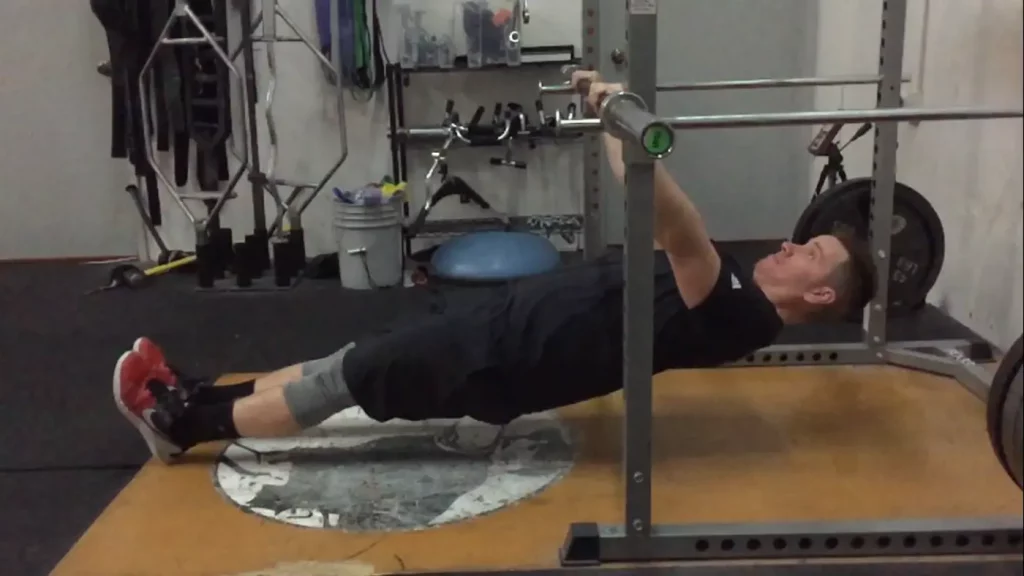
Inverted Row Finish
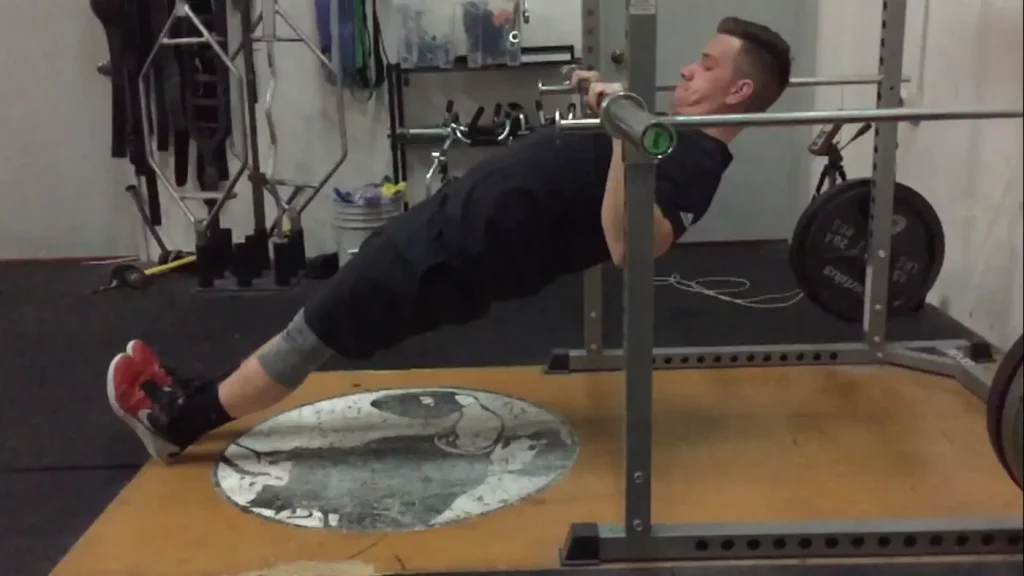
Moving on from the inverted row, let’s discuss single-arm cable rows. The biggest benefit of cable rows are the ability to perform multiple variations. Cable rows can be performed in a standing position, half-kneeling position, or split-stance position. By switching up those variations, we can either progress or regress by either incorporating more core stability in a half-kneeling position or a heavier load in a standing- or split-stance position. Most cable machines can also be adjusted to high or low settings. By varying this component, athletes can pull from different angles, putting the shoulder in different positions, and thus strengthening the rotator cuff by forcing it to grab on and keep the humeral head stable.
Standing Cable Row Start
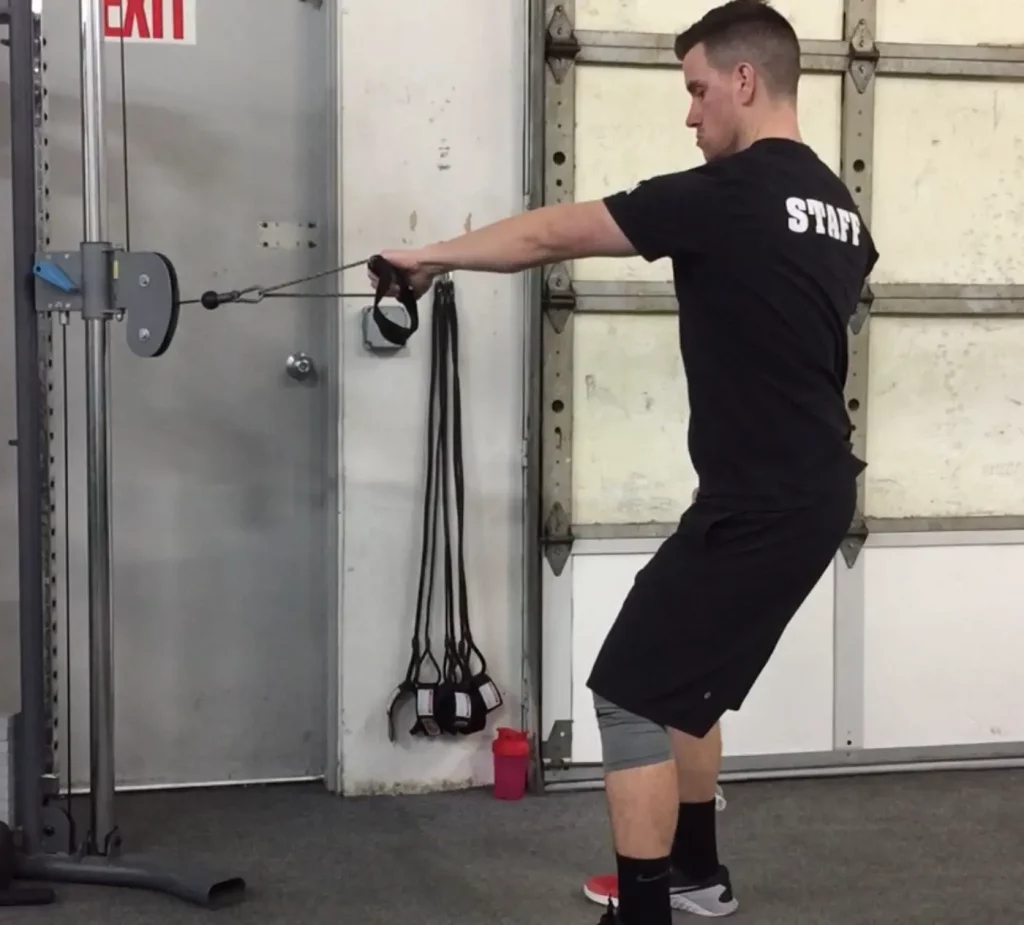
Inverted Cable Row Finish
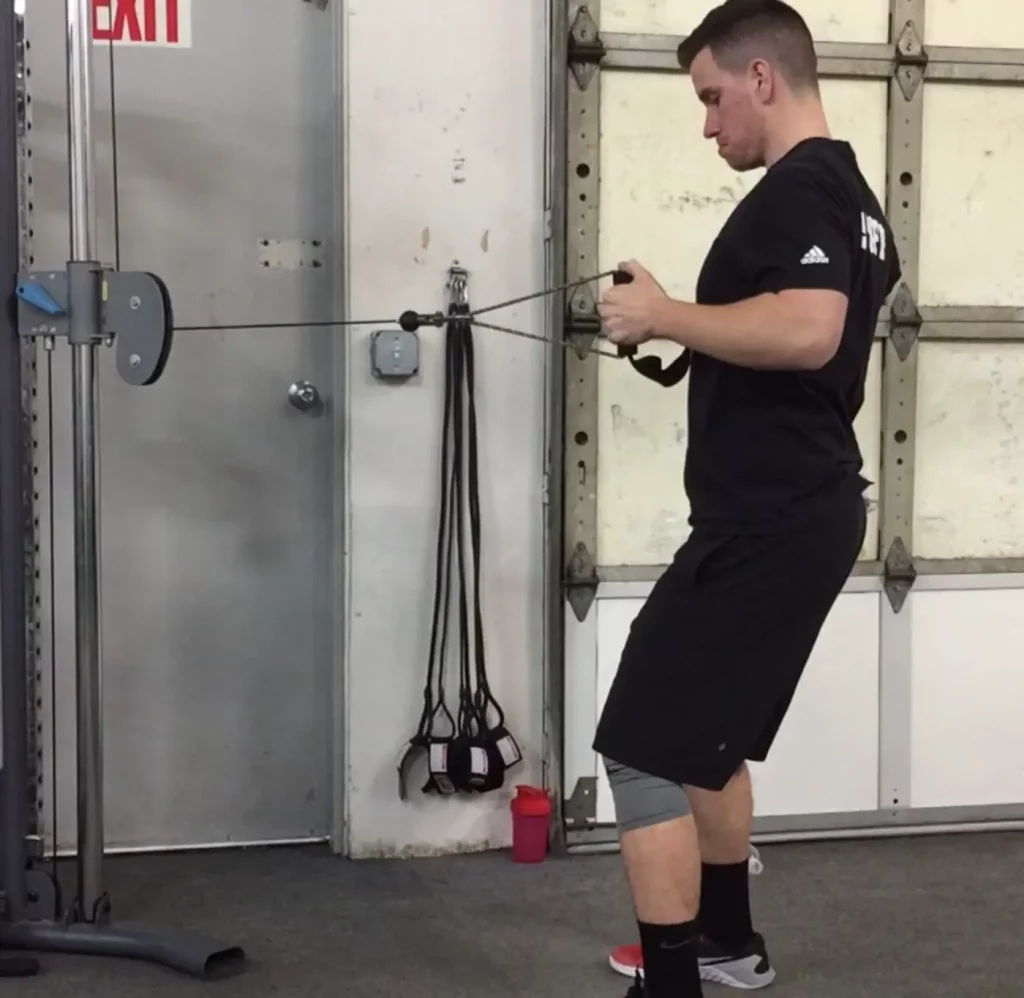
Half-Kneeling Cable Row Start
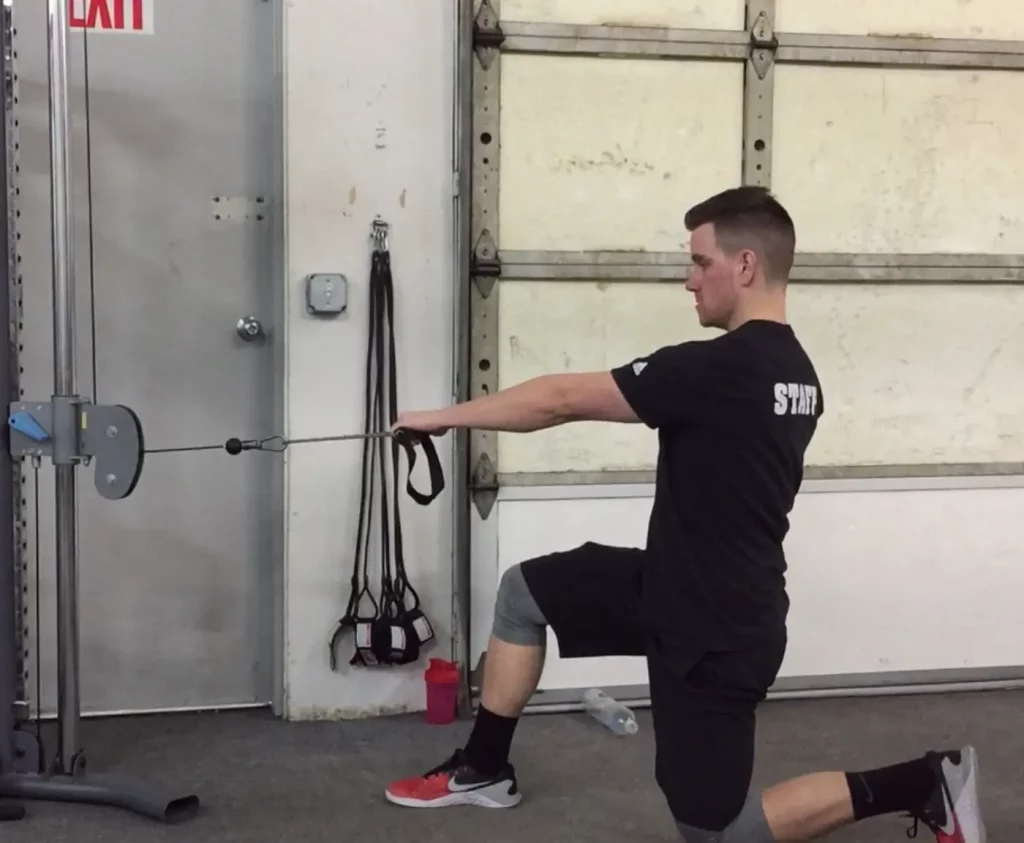
Half-Kneeling Cable Row Finish
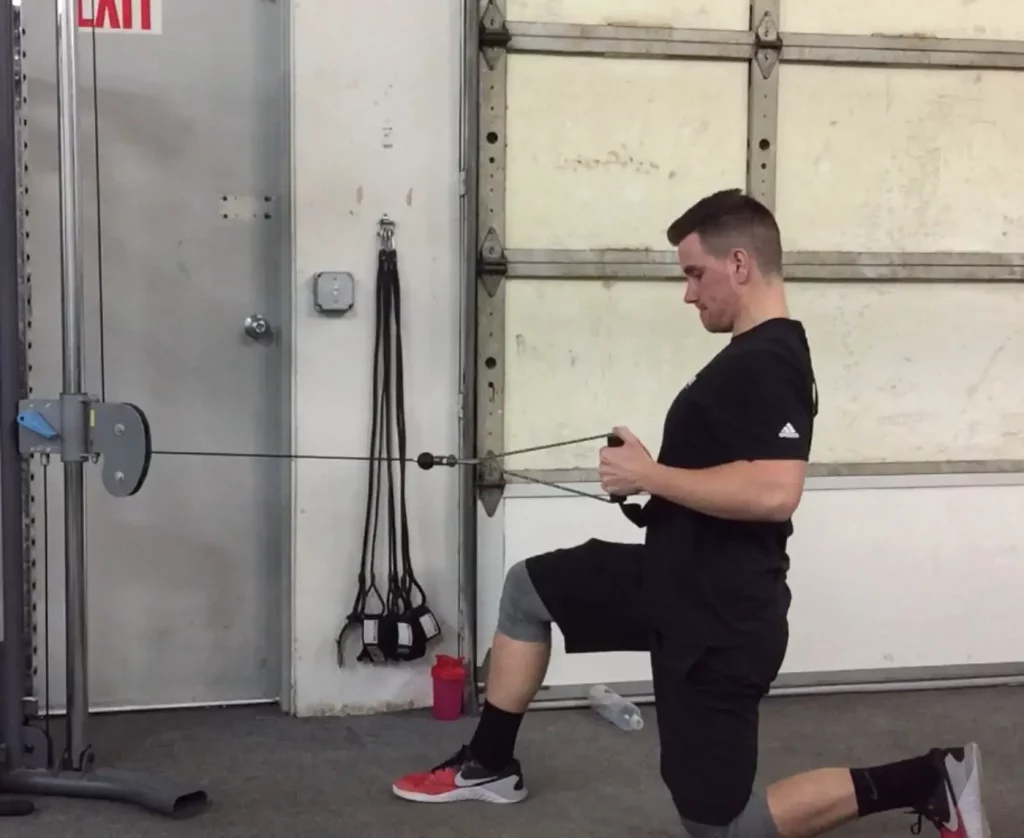
Be sure to get a full range of motion, but do not pull the weight too far. If the elbow extends too far past the body, the humeral head will rotate forward, putting the shoulder in a compromising position.
Split-Squat Cable Row Start
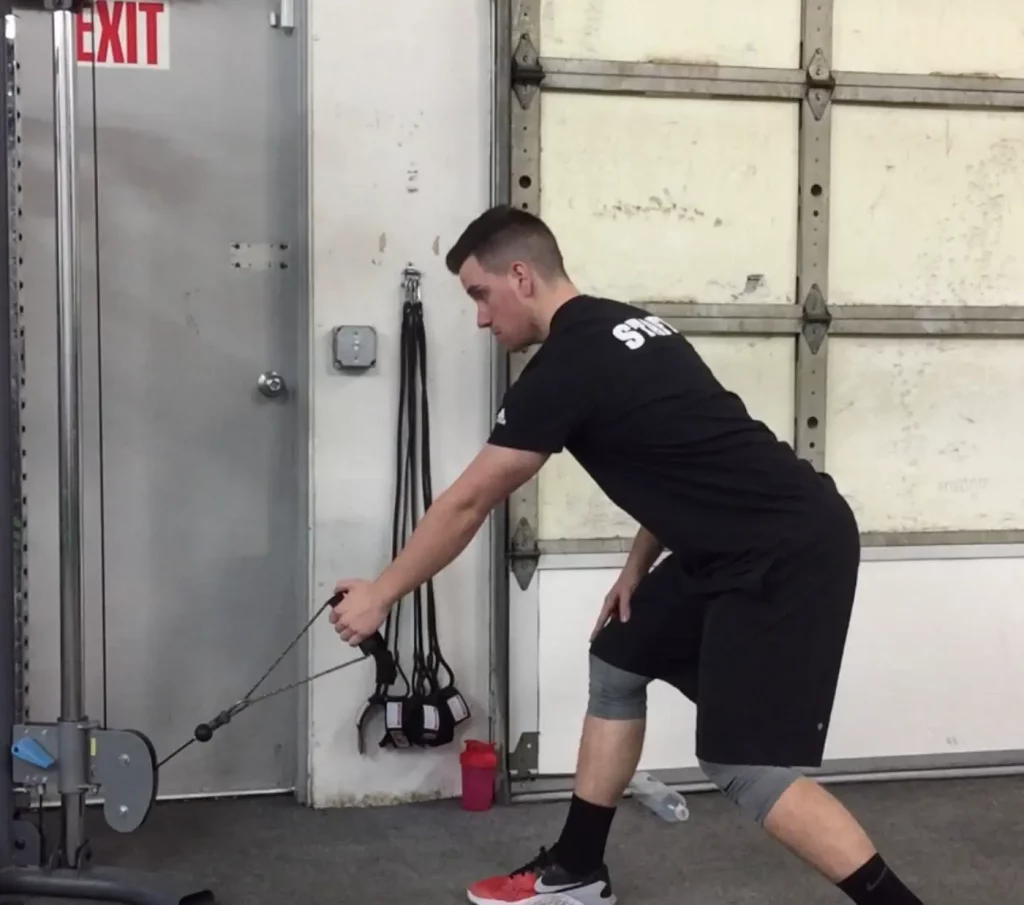
Split-Squat Cable Row Finish
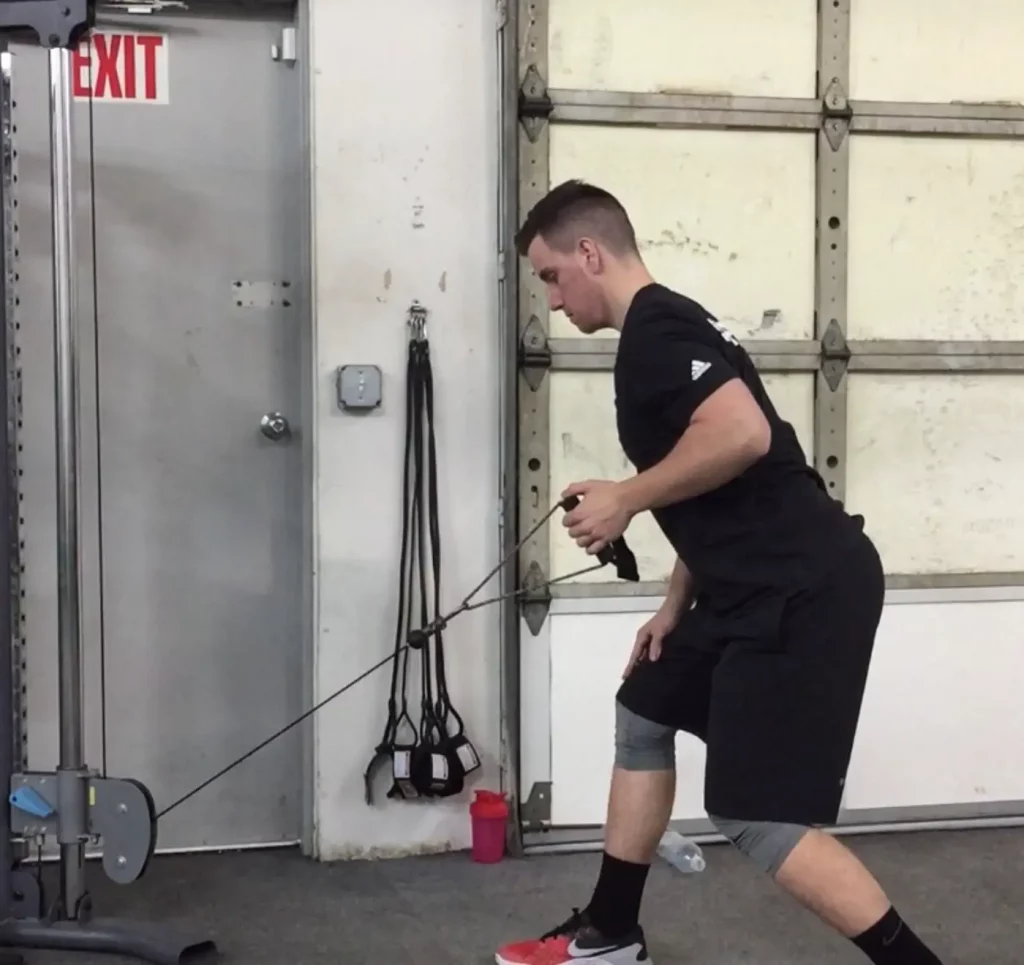
Arguably the most functional of the rowing variations is the 3-point dumbbell row. The 3-point dumbbell row is where we begin to increase the external load and get into more of our maximum-strength work. Because the load is heavier, the benefits we talked about before with the inverted row and cable row are even greater. With a full range of motion, we will achieve greater scapular retraction. The rotator cuff has to work harder to stabilize the humeral head at greater loads. In order to maintain a strong and stable base in the 3-point position, we must activate our erector spinae muscles. In addition, because the 3-point dumbbell row is unilateral and we can load it heavier, we get an increase in core stability through anti-rotation. The 3-point dumbbell row is possibly the most “bang for your buck” exercise.
3-Point Dumbbell Row Start
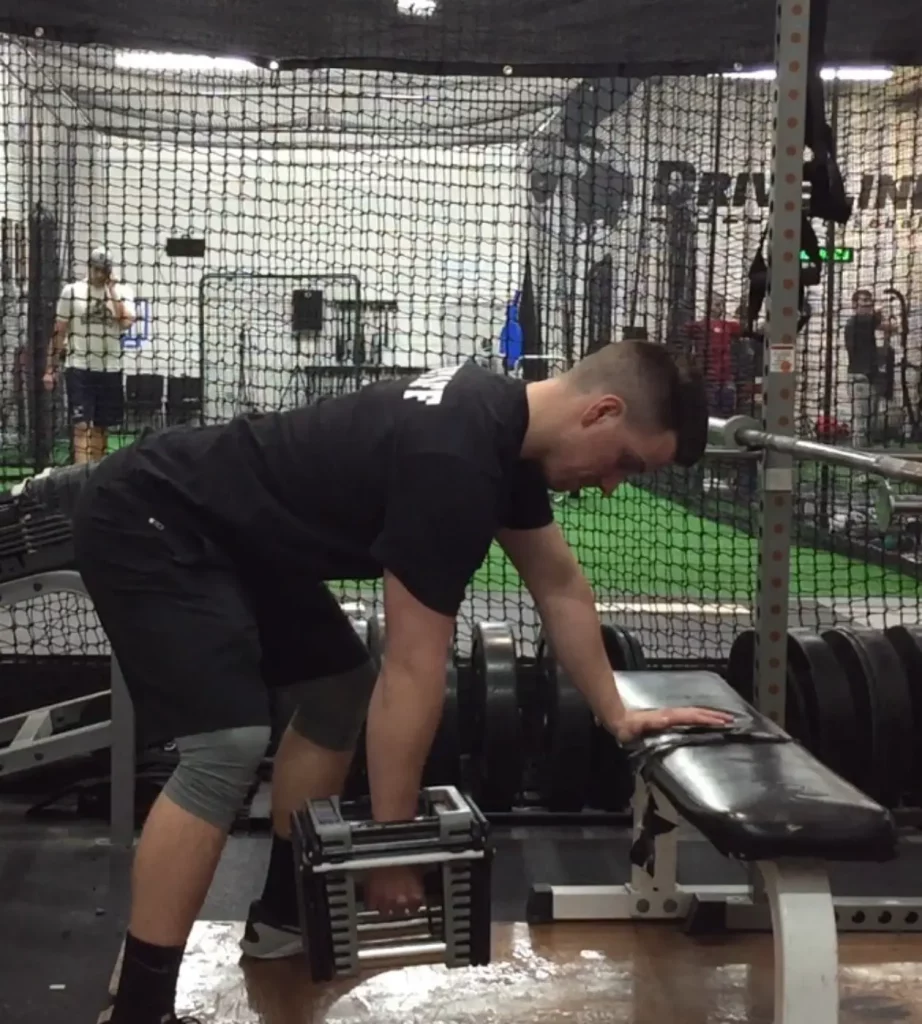
3-Point Dumbbell Row Finish
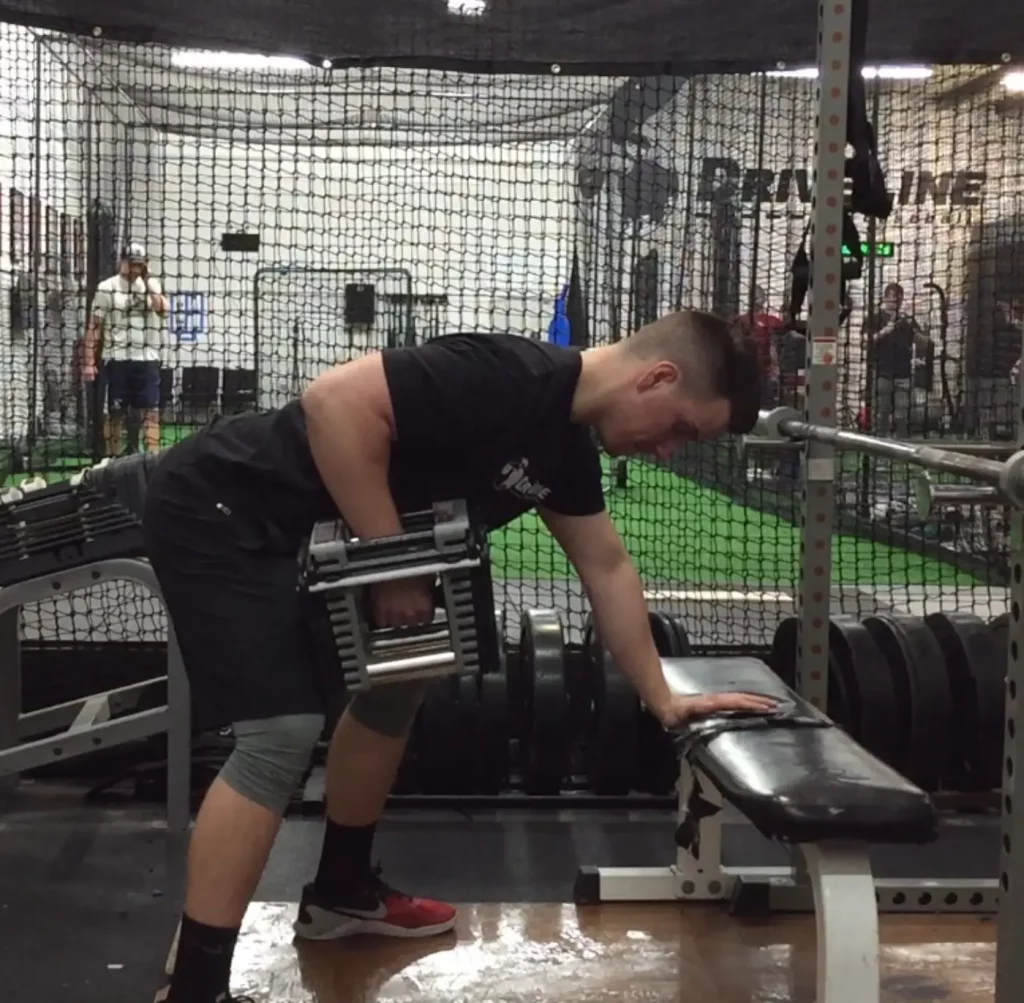
Place your opposite hand on bench and slightly bend both knees. Maintain a neutral spine, and keep the core engaged. This position also places an emphasis on the hip hinge. When beginning the movement, engage your lat and drive the dumbbell up and back towards your hip to maintain tension. Get a good stretch at the bottom of the movement to emphasize scap retraction.
Finally, the exercise that has arguably the biggest carryover in strength and hypertrophy is the barbell row. Contrary to other rowing variations that are unilateral movements, the barbell row is a bilateral movement that works both sides of the body simultaneously. Because of this, the external load will be greatest with the barbell row. Where the 3-point dumbbell row increases core stability through anti-rotation, the barbell row increases core stability through anti-extension. The spinae erectors are extremely active throughout this movement as the body is maintaining a strong base in a hip hinge, similar to a 3-point dumbbell row but without the support of the opposite hand.
Barbell Row Start
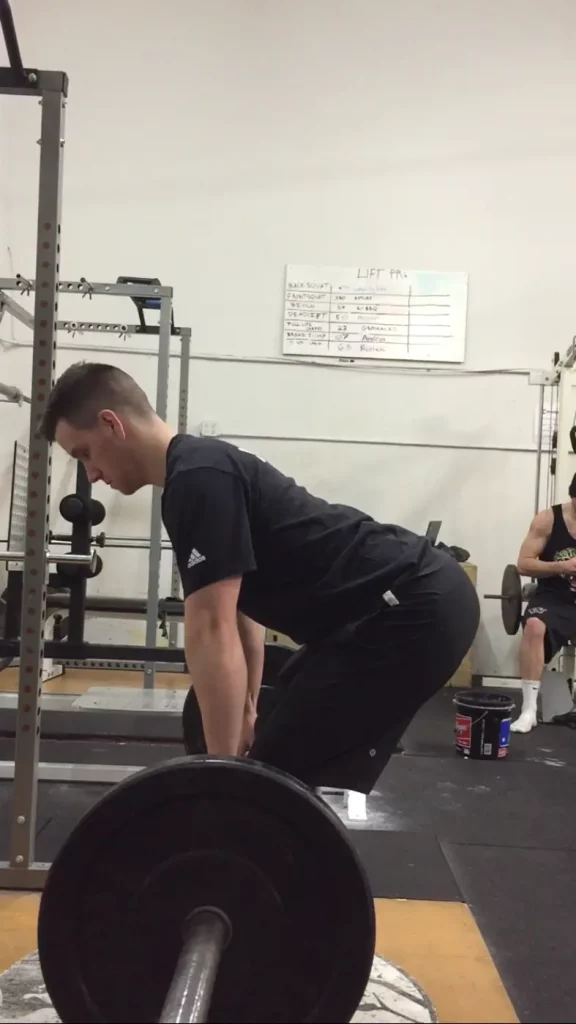
Barbell Row Finish
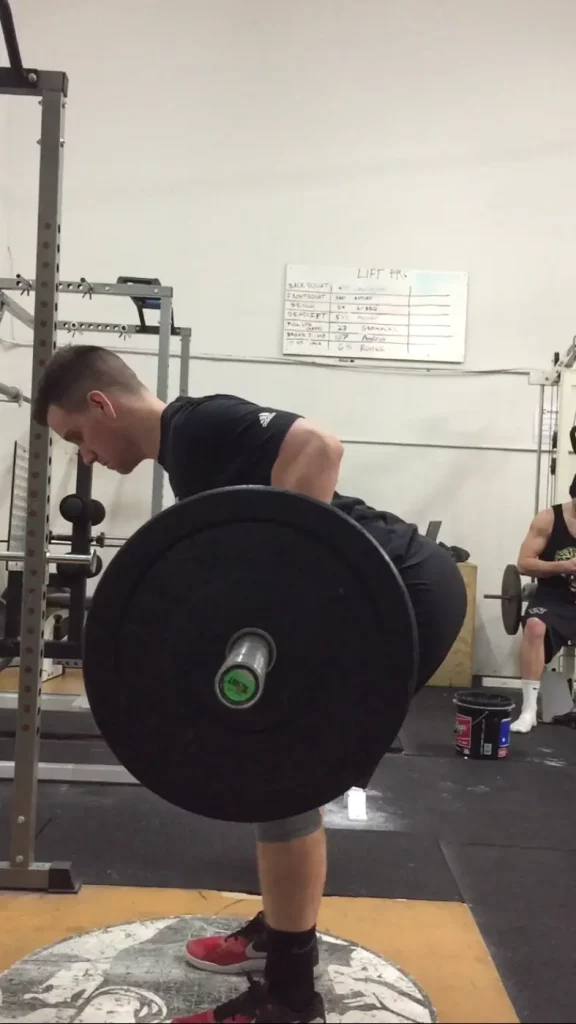
Starting with the bar racked, grab the bar with a slightly wider-than-shoulder-width grip. Hip hinge by pushing the hips back and keeping the chest big. With the chest at about 45 degrees, engage the lats and core to maintain a neutral spine. Pull the bar back and towards your bellybutton to maintain tension throughout the lats and rhomboids. A normal grip will target the lats most, a reverse grip will target the biceps more directly, and a wider grip will target more of the upper back and traps.
This article was written by Kyle Rogers, Driveline Trainer.
Want to learn more about strength training as it relates to being a better pitcher? Read all of our articles relating to strength here.
Comment section